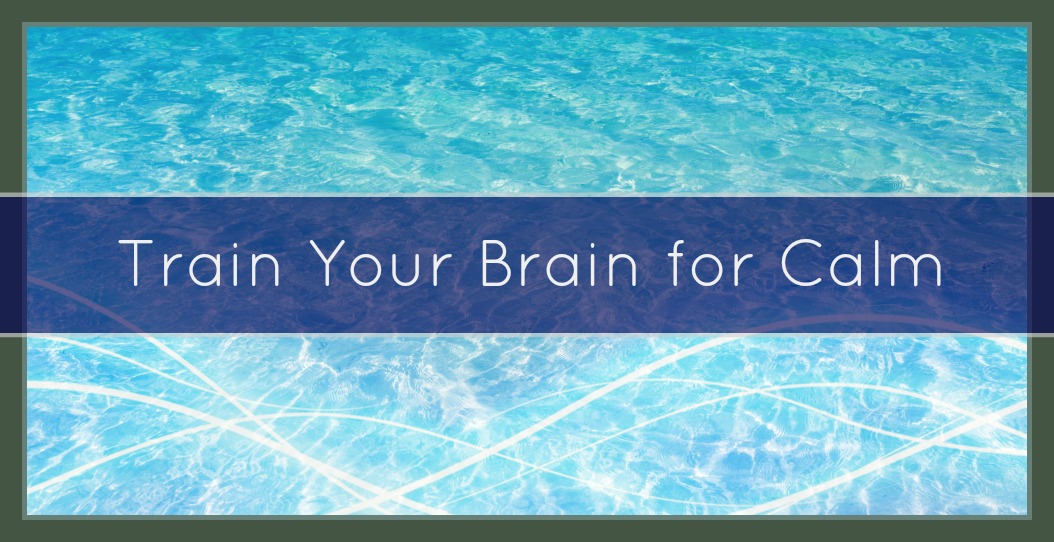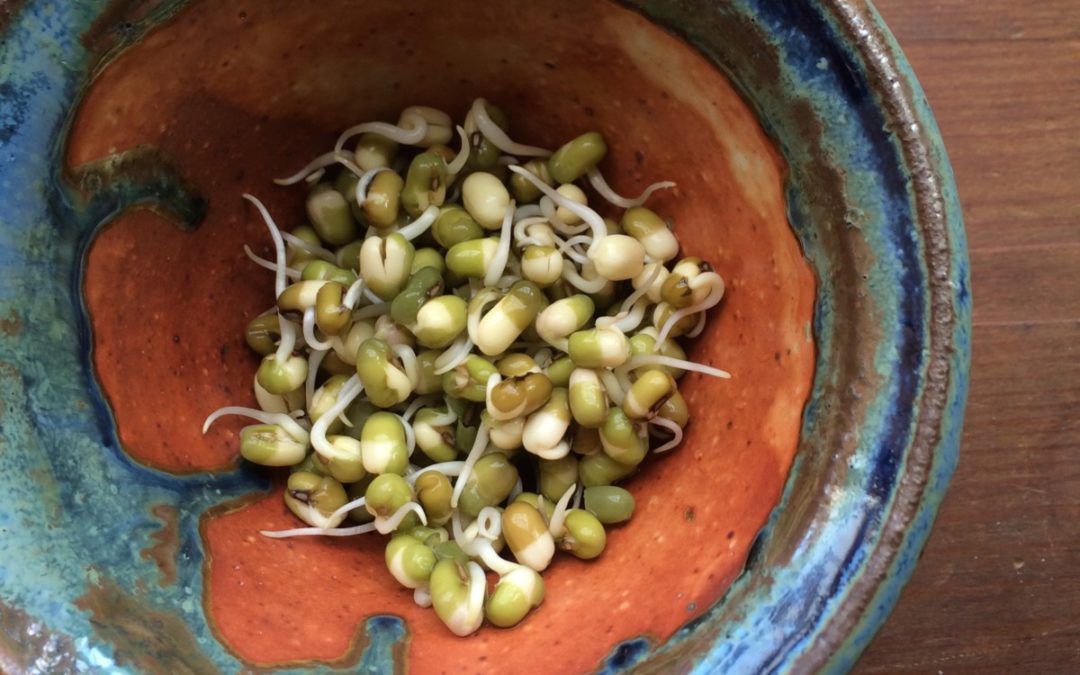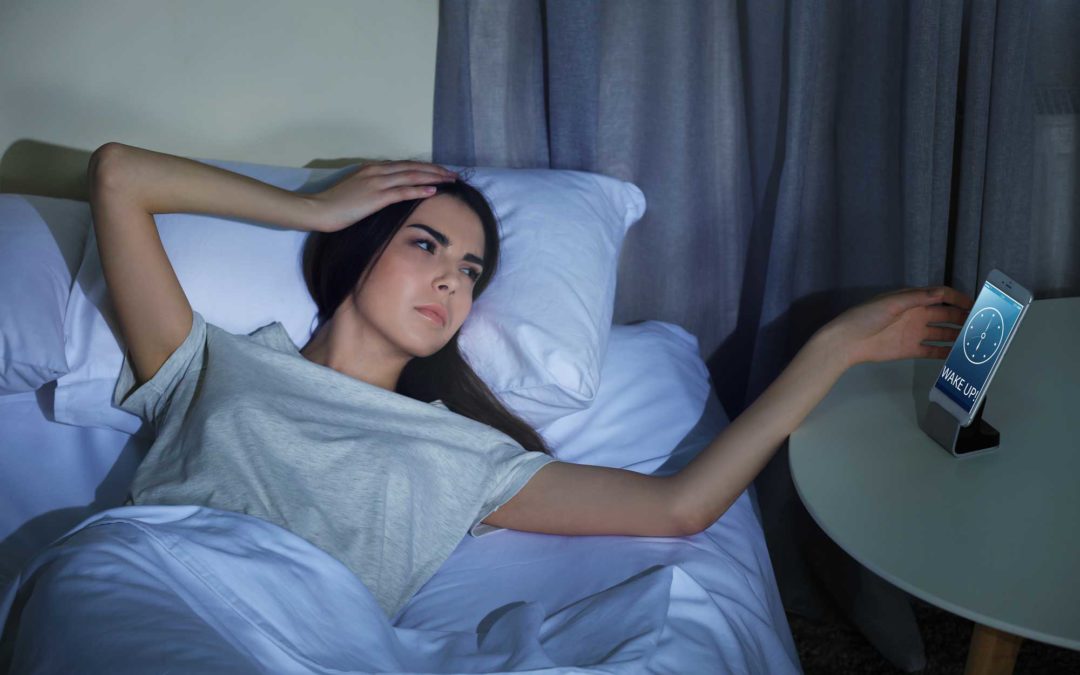
by Amanda Malachesky | Aug 7, 2017 | Chronic Illness, Digestion, Functional Medicine and Coaching, Functional Nutrition

You might think that since I’m a health care practitioner, and I help people sort out the root causes of all manner of health problems that I myself am in perfect health.
Well, wrong…
I wish it were true. The unfortunate truth is that I came to this field because of my own complex, confusing, seemingly-non-diagnosable, multi-tiered illness. And though all of us in these shoes desperately wish for a quick solution to our problems, the cold, hard truth is that the path from A to B is rarely a straight and simple line. It often requires some experimental investigating and self-treatments. Sometimes the steps are clear right away, but other times, they are not.
My training with Functional Diagnostic Nutrition taught me about using specialty lab testing to identify hidden stressors, factors I may not have realized were affecting my health. I was my own first client, and my testing revealed important imbalances and hidden infections I hadn’t known were there. So I began supporting my body to try to correct what I found.
I made improvements, to my digestion, and my moods. I worked hard to readjust my lifestyle habits to support health (i.e. I no longer stayed up till midnight every night, I incorporated daily exercise, and worked on reducing stress). But despite all my best efforts, I remain plagued by food intolerances that make it nearly impossible to eat out or at someone else’s home. I struggle with moods, and I know that my hormones are not right.
So now what?
My Newest, Known Health Challenge: SIBO
Now, I move into deeper layers of inquiry. All the first-line options have not produced the results I’m looking for, and so I look deeper and consider the question: What stone remains unturned? What have I ignored, or maybe not noticed?
Up until now, I hadn’t examined the possibility that I have SIBO, or Small Intestine Bacterial Overgrowth. I lack a few of the normally prominent symptoms, such as horrible bloating, which may be due to the painstaking work I’ve done identifying food triggers. I do have persistent, stubborn constipation, a rosacea-like redness on my face, and have not been able to resolve some of my gut health markers or food sensitivities. All of this, in spite of doing everything “right”. So I finally ran the SIBO test.
The results? I do indeed have methane-dominant SIBO, which causes the telltale constipation. In fact, the test uses a provoking agent, to encourage the bacteria to produce their gases for measurement. I experienced a dramatic increase in symptoms within the five days after the test, so this was another positive indicator for SIBO.
So now I have a new plan to move forward, and I will begin incorporating it next week.
Getting to Point B
The end goal of health maintenance and my coaching with clients, is to help them get to that Point B they are trying so hard to reach. But as I said, the path is never a straight line. Sometimes, we take several wrong turns before the right one turns up. Or we do support work, but it’s not enough. But we need to keep trying, systematically, until we discover what helps move things forward. The mistakes we make along the way provide equally important information. They inform us about our (in)tolerances, our unique physiology, what is already working, or what needs more support. The result of this inquiry is a personalized health plan, tailored just for YOU.
Even more important is having a practitioner or coach committed to working with you through this process. Doing this work on your own is confusing, frustrating, discouraging, maddening, and you may be often confronted by a desire to give up. By a process of tracking, trial, and noting success or failure, we move ever closer to understanding the source of the problem and root cause resolution.
My personal goal is to be able to walk into any restaurant and (within reason) eat most items on the menu, and to be able to go to dinner at a friend’s home without calling ahead to find out what will be served. Now that I’ve eliminated foods that seem to cause problems to alleviate my symptoms, addressed parasites, added in general digestive support, and removed endometriosis via surgery, my next step is to encourage my small intestinal health back to normal.
I’m going to keep at it with my own personal health, and so can you. If you’re interested in the kind of support I’m describing here, schedule a free discovery session here.

by Amanda Malachesky | Jul 18, 2017 | Functional Medicine and Coaching, Functional Nutrition, Genetics, Symptoms
It’s not so unusual for me to be following an emerging aspect of health science that most people haven’t yet heard of. My latest conquest: understanding methylation.
SO what the heck is methylation? Methylation is a biochemical process of cell and DNA maintenance and clean up. It is happening throughout your body millions of times every single minute, and happens constantly throughout your life. Without methylation, your body couldn’t survive. Intrigued yet?
The reason methylation is important is that some of us carry genetic variations called SNP’s (pronounced “snips”) that can impair our ability to efficiently perform methylation and the needed DNA maintenance to keep our bodies healthy.
The methylation cycle depends on many different genes, and the function of one or more of them may be impaired by the genes you were born with. As biochemical compounds move around the four methylation cycles, if an impairment is present, certain compounds may become elevated or depleted in bottlenecks created by your unique genetic weak links. Some of these bottlenecks can increase the risk of cardiovascular disease, neurotransmitter disorders, digestive problems, alzheimer’s disease, hormone metabolism problems, inflammation and autoimmune diseases, cancer, autism, ADD, chronic Lyme, chronic viral infection, and more. If you are someone suffering from complex, multi-system illness, exploring your genetics and your specific genetics related to methylation may provide some very useful information.
The good news is that knowing the appropriate information about your genetics can enable you to support your weak links in your chain with nutrition and lifestyle choices, which can help prevent or reverse current or future illness or disease. You owe it to yourself to learn about your genetics!
How to Assess Your Genes
To identify your particular genetic methylation weak links, you first need to have your genetics tested. This is a very simple saliva test, taken at home with a kit from 23andme or a similar service.
Buy a 23andme Genetics Screening Test Here
When you receive the kit, you register it online, take your saliva sample, and mail it in. Results typically arrive in 4-6 weeks.
Once you have your 23andme results, you need to send your data to a third-party service, which will evaluate and interpret the raw data, and send you a report describing whether you have the “normal” SNPs, or mutated SNPs. I like to use the report from Metabolic Healing which costs $37, or StrateGene, which costs $45. There are free reports available as well, such as from GeneticGenie, but they generally don’t check for as many SNPs, and are less complete.
What to Do With Your Genetic Information
Now that you have your genetic information and your report, you now need to consider how to interpret the information. It’s become quite popular for practitioners to look at those reports, and suggest supplementation based on your genetic SNPs. This is not an appropriate approach, in my opinion.
Your genetics are fixed, but just because you HAVE a SNP doesn’t mean that that SNP is expressing in a negative way. It’s important to consider the information you receive in the context of your actual medical and health history, and sometimes to perform current biochemical tests, such as blood, saliva, or urine tests to see if the SNPs are truly an issue. For example, if you have a mutation for the Vitamin D Receptor (VDR) gene, you don’t necessarily want to supplement with Vitamin D without testing your blood levels.
It’s a great idea to discuss this genetic information with your doctor or another practitioner who can help you interpret the results to create a plan. Click here to make an appointment with me to discuss your genetic results.
If you’d like to read more about methylation, I recommend an easy-to-understand book by Amy Yasko, called Feel Good Nutrigenomics: Your Roadmap to Health. This book describes the very complex science of methylation and genetics for the layperson, and provides a strategy to address your own personal genetic shortcomings to enhance your health. This can lay a foundation for either shifting your complex health issues, or practicing preventative health care for yourself and your family.

by Amanda Malachesky | Jun 26, 2017 | Brain Health, Functional Medicine and Coaching, Functional Nutrition, Stress, Symptoms
As a practitioner, I really like to help my clients delve into the why behind their health problems, and to explore angles they may not have considered before. The four main pillars of the programs I create for clients are diet, exercise and movement, sleep, and stress.
Stress really wreaks havoc on our health in so many different ways, and it’s one of the foundational areas I help with. Stress can impact our sleep, decrease the function of our immune system, disrupt digestion, mess up our relationships, and leave us feeling anxious, tired, worn out, frazzled, and spent.
What I’ve also noticed, however, is that it can be SO difficult to let go of our habits and patterns that allow a stressful mindset to continue. But to move forward on our healing journeys, we must dial down the stress. This includes reducing or removing hidden infections, like parasites, viruses, or bacterial infections, environmental stresses like mold or toxins, negative people in our life, or dealing with hidden nutritional deficiencies. But it can also mean retraining and reframing our brain and how we respond to our daily life.
Here are some signs that you might need to work on training your brain for calm:
- Even when you are trying to relax, your brain remains busy, thinking about a million things.
- You have difficulty falling or staying asleep, because your mind is busy, or startles easily.
- You lose your temper easily, even from small inputs.
- You are plagued by memories or dreams of scary, traumatic, or stressful events.
- You regularly have negative thinking patterns, where you assume the worst about people, the future, or your current situation.
- You struggle with phobias or non-specific anxiety.
I want to share a few resources for you to explore if you are needing to retrain your brain for calm. Especially if you are a person who is carrying the burden of trauma in your past, I want you to know that there are ways to help your brain and body release those stored memories and process the pain attached to them. You will always have the memories, but it is possible to separate the emotional charge from them, so they don’t run your life anymore.
Emotional Freedom Technique
Emotional Freedom Technique (EFT), also called tapping, is a method of helping the brain to discharge stressful and traumatic events, and reach a state of resolution and peace. EFT was developed by Gary Craig, a Stanford-educated engineer. It has been particularly useful for those suffering from Post Traumatic Stress Disorder (PTSD), but has also proven useful for managing pain, phobias, anxiety, illness, and many other conditions.
To use EFT, a person explores the roots of a difficult emotion and verbally expresses the situation in a particular way. The person then taps particular points on the body in a specific sequence while verbalizing a shortened version of the statement they created. It’s not clear exactly why it works, but I suspect that this method helps the brain reconnect the emotional impact of an event with the more analytical present-time mind, which allows the brain to process the experience and move on. I have seen this technique produce remarkable results for many of my clients.
Anyone can learn to do EFT for themselves by visiting the Emotional Freedom Technique (EFT) website www.emofree.com, and learning the method for free with a manual and/or videos. It doesn’t take long to learn, and can create a significant reduction in difficult emotions and trauma in a very short amount of time.
Eye Movement and Desensitization and Reprocessing (EMDR) Therapy
EMDR therapy is an evidence-based type of psychotherapy, also commonly used to help with PTSD. Bilateral visual or aural stimulation is used to help the brain access it’s built-in methods for adapting to and processing trauma. It can help the person access painful or difficult memories, and then allows them to process them within a therapeutic environment.
EMDR therapy is available by seeing a therapist trained in the modality. To find a trained clinician, you can visit the EMDR Institute website. For further reading about EMDR, check out EMDR: The Breakthrough Eye Movement Therapy for Overcoming Anxiety, Stress, and Trauma by the founder of EMDR, Francine Shapiro, PhD.
Self-Hypnosis Recordings
I’m a fan of techniques and methods that my clients can use and access in their own home, at a time and place of their choosing. Self-hypnosis is a way to help the brain access a relaxed and suggestible state, and can double as not only stress relief, but retraining the mindset to a positive and healing state.
People with long-term chronic and complex illness can often become discouraged to the point where they believe they may never get well. This negative thinking pattern can become quite “sticky”, and can become a source of stress in and of itself. There are hundreds of self-hypnosis recordings out there. They are inexpensive, and focus on a wide array of issues, from insomnia, stress, specific illness, headaches, and even childbirth.
I like to suggest clients start with one or two recordings that they like, and consistently listen to them, while falling asleep, or any other time it is safe to do so. It can take some time to rewire the brain, so consistency here is key. As an example, I struggled with insomnia for several years, since my kids were born. I had trained myself to wake up to every little tiny sound at night, and could no longer sleep through the night. I tried a lot of solutions, including supplements, dietary changes, routine changes, and more, and nothing worked.
Last winter, I invested in a sleep hypnosis app, called Sleep Well by Surf City Apps, and began listening to it nightly. It took about 4 months, but slowly, I began to sleep deeply, fall asleep faster, and wake up feeling more refreshed. You can do this too! Get out there and find a recording that is relevant to you, and enjoy.
Meditation
No conversation about retraining the brain would be complete without mentioning meditation. Meditation is consciously focusing on your breathing and thinking patterns with the goal of calming the mind. Here are some of the many benefits of meditation:
- lowers blood pressure
- improves depression and anxiety
- increases self-awareness
- reduces chronic pain
- increases immune function
- improves sleep disturbances and fatigue
- improves gastrointestinal problems, such as IBS
- slows aging
- increases happiness
There are many meditation traditions, and ways to explore. Books, videos, recordings, and classes are all viable ways to access meditation and to give it a try. Here is one of my favorites, The Little Book of Mindfulness by Patricia Collard.
Many people imagine that meditation is a bunch of monks chanting in colorful robes, but it really is a practice of personal awareness that can be adapted to any lifestyle or spiritual tradition. Any activity at all can be an excuse to bring the mind to a meditative state, such as taking a walk, playing music, drinking your morning tea or coffee, or anything else that allows your mind to quiet itself.
I hope that this information is helpful for anyone suffering from a troubled mind.
How do you train your brain for calm? Comment below…

by Jen Briar-Bonpane | May 16, 2017 | Brain Health, Digestion, Functional Nutrition, Nutrition, Uncategorized

Most of us know by now that refined sugars aren’t good for us and don’t serve our long term health goals. So why is it so hard to resist a stop at the office cookie jar? Understanding how sugar and sweets affect our brain chemistry and mood can be the key to making healthier choices.
Maintaining balanced blood sugar is essential for overall health. Blood sugar that swings high and drops low throws the body into a state of imbalance that can make you feel extremely tired, jittery, anxious, or angry. Excess sugar circulating over time leads to increased insulin production, increased fat storage, high blood pressure, cancer, obesity, diabetes, heart disease, exacerbation of autoimmune conditions, adrenal fatigue, hashimotos, candida, and mental health issues. Eating refined sugar and simple carbohydrates (the “white stuff”) wreaks havoc on our blood sugar and triggers a cascade of reactions in our bodies that affect all of our organ systems.
A few powerful brain chemicals play major roles in driving us to have another muffin, a little more bread, or another quick pass by the candy dish, even when we know we shouldn’t and are committed to our health goals.
- Dopamine is a neurotransmitter that creates feelings of pleasure. When we eat something sweet, we release this potent brain opiate and it makes us feel good…like an instant reward system.
- Another player is the beta-endorphins, which are the brain chemicals known as the brain’s pain killer. They help us cope and boost our feelings of self-esteem. Eating sugar temporarily increases the beta-endorphin levels and leaves us feeling like we can manage the stress of the day a bit better.
- And, of course, our good friend seratonin is part of this as well. When we eat sugar, our insulin levels rise resulting in increased tryptophan which is a precursor to seratonin production. So, more sugar means more seratonin, which helps us feel peaceful and more relaxed.

With these powerful chemicals flooding our system with rewards after we eat sugar, choosing to pass on the treats can be extremely challenging. The good news is that we can stimulate these three neurotransmitters without consuming the sugary foods and simple carbs that can feel good in the moment but set us up for disease in the long term. Here are a few ideas:
- Tyrosine-rich foods like lima beans, avocados, pumpkin seeds, and almonds can stimulate the release of dopamine
- Tryptophan-rich foods like spinach, salmon, mushrooms, mustard greens, and tamari help increase seratonin production
- The taste of something sweet on the tongue helps these feel-good brain chemicals flow. So try experiencing the taste of sweetness without the harm of refined sugar by using low-glycemic sweeteners such as stevia, or naturally sweet low-glycemic foods like grapefruit, nectarines, pears, and blueberries.


by Amanda Malachesky | Apr 25, 2017 | Cleansing, Functional Nutrition, Nutrition, Recipes
Just the other day, my five-year-old found the dried beans in jars in the pantry, and begged me to make sprouts. What’s a mom to do?!
We started mung bean, adzuki bean, and clover sprouts, and I realized that there is no better time to make sprouts than the spring season, as our metabolism is emerging from its winter dormancy. Spring is an ideal time to clean out the cobwebs in our body by cleaning up our diet, and adding lots of fresh foods like sprouts to our diets.
Shown are my mung bean sprouts, and they contain bioavailable vitamins A, C, and E which are important antioxidants to help keep our cells healthy, along with iron and potassium, and 20% protein. The adzuki beans also have niacin (B3) and calcium, along with all the essential amino acids and 25% protein! Clover sprouts also have vitamins A, Bs, C, and E and 30% protein, along with the minerals calcium, magnesium, potassium, iron, and zinc. Each of these minerals is important for maintaining the adequate function of our cellular enzymes that keep our DNA healthy and help support our energy and moods.
With all these benefits, I want to make sure you know how to make sprouts! It’s really very easy, and they are a tasty addition to salads, sandwiches, and stir-frys.

I make my sprouts in a pint sized Mason jar, and I replace the cap portion of the lid assembly with a piece of stainless steel window screen cut into the right size. You can also use these pre-made stainless-steel screen lids, available here, or these plastic lids.
How to Make Sprouts
- Pour a few tablespoons of your favorite food to sprout: try mung beans, adzuki beans, lentils, or peas; grain; clover or alfalfa; sunflower seeds; broccoli seeds and radish seeds, etc. Radish and broccoli sprouts are especially rich in sulfurophanes, which are potent cancer-fighting nutrients.
- Fill the jar with water, and soak seeds until they swell and begin to crack their shells. The time varies with the size of the seeds, usually 12-24 hours.
- Once they crack, pour out the water, and rinse the seeds well and drain.
- Lay the jar sideways on a windowsill or kitchen counter where it will get at least a little indirect sunlight.
- Rinse 2 times per day, and replace jar sideways.
- Continue with this step until the sprouts are the length you like. For mung beans, 2-3 days is sufficient.
- Rinse thoroughly, and drain well. Then, replace the screen insert or plastic lid with a normal Mason jar cap and store in the refrigerator.
For a very thorough discussion and specific instructions on how to make all the different kinds of sprouts, check out Sprout People. You can usually find many seeds to sprout in the bulk section of your local health food store (make sure to buy organic), or you could click here to order a sampler pack of organic sprouting seeds.

by Amanda Malachesky | Apr 14, 2017 | Brain Health, Functional Nutrition, Stress
Most of the clients that come through my doors have trouble sleeping. It’s one of the things I want to work really hard to help with right away, because sleep is so very important for restoring our health. How well we sleep affects our eating habits and metabolism (anyone out there trying to lose weight?), our moods, and our brain health and memory. Here are five reasons you may be having trouble sleeping, and how you can begin to help. Which ones speak to you?
1. Caffeine Consumption
A majority of my clients enjoy coffee and tea, and there is nothing inherently wrong with these beverages. In fact, they both contain food sources of antioxidants, which have a protective effect on our health. However, excessive caffeine consumption can definitely disrupt sleep in several ways. Of course the caffeine can keep you awake if you drink it too close to bedtime. What “too close” is varies greatly for people. For some, anything after first thing in the morning will keep them awake, while others can consume caffeine right up until bedtime without any perceived effect.
The other way that caffeine can influence your sleep is by its affect on blood sugar. For some people, the jolt of coffee really stimulates the body to produce energy. But with this stimulation, your body uses up your available blood sugar and can overshoot the mark, causing you to experience an energy slump later on in the morning or day. If you repeatedly reach for a caffeinated beverage to correct this problem, I hope you can visualize the roller coaster experience your body is riding to try to equalize your energy and blood sugar levels.
I generally recommend that you consume your caffeine before noon, and limit yourself to 1-2 cups of coffee or tea per day (not espresso!). Don’t forget that chocolate also contains caffeine, so you might want to rethink that flourless chocolate torte dessert after dinner.
2. Exercising Late in the Day
Exercise is an important part of any healthy lifestyle, but as with anything, too much of a good thing at the wrong time can cause trouble. Vigorous exercise, such as a cardio-type workout, is perceived by the body as a form of stress. In spite of the important cardiovascular effects, this stress elevates your levels of the hormone cortisol, which typically begins to decline after mid to late morning. If you exercise in the afternoon or evening, you may find that you have a difficult time falling asleep.
Aim to complete your exercise during the morning hours. The best for weight loss is on an empty stomach first thing in the morning, before you eat breakfast. An even better addition is to do your morning exercise outside in the daylight, as this helps reset your circadian rhythm, and can doubly help you feel more like sleeping when it’s time to go to bed.
3. Low Melatonin/Gut Infections
You may not be thinking about your melatonin levels, but being infected by hidden pathogens such as parasites, bacteria, or yeasts may have an impact on your ability to sleep well. There are several reasons this is so. Melatonin is a hormone that helps us feel sleepy. Some is produced by the pineal gland in the brain, but 70% of it is produced in the gastrointestinal system. When we have a pathogenic infection in the gut, one of the side effects of the infection can be a low level of melatonin. This can translate to more difficulty sleeping.
Gut infections also create elevated levels of cortisol, our stress hormone, which can also affect blood sugar levels. Cortisol is responsible for our circadian rhythm, and therefore has a lot to do with our wakefulness. Cortisol should be low at night when we are trying to sleep, but pathogenic infectious agents tend to create a rise in nighttime cortisol levels over normal, impacting our ability to go to sleep and stay asleep. If you suspect you may have a pathogenic infection, reach out to me or another practitioner who can help you explore this.
4. Staying Up Late (Even if We Sleep Longer in the Morning) and Not Getting Enough Sleep
Don’t lie, I know many of you burn your candle at both ends, and regularly stay up late. I used to be one of you! It’s not uncommon for people to go to bed at 11, 12 or even 1-2 am. I was guilty of this when my kids were little because I wanted just a little time to myself, and to catch up on things I couldn’t do while my kids were awake. I couldn’t have been more misguided about this.
Our brain needs to restore and repair itself while we sleep. For the best restorative effects, we need to spend time in REM sleep, dreaming. Because our sleep cycle is partially regulated by our cortisol rhythm, we naturally become sleepy in the middle evening, around 9 or 10 PM, and reach the point of lowest cortisol production in the middle of the night. We naturally begin to become progressively more wakeful later during the night.
When we push ourselves to stay up past that natural decline of cortisol in the evening, we get a second wind. Have you noticed this? Then we’re ready to stay up for a few more hours. But because of our cortisol rhythm, our deepest, most restorative REM sleep is available to us in the early hours of our sleep cycle, before midnight. Regularly going to bed before midnight generally leads to better overall sleep quality, and also helps increase the hours we are asleep.
You don’t have to look far for the benefits of getting enough quality sleep. People who sleep less than 6 hours per night are at an increased risk of infection, insulin resistance, obesity, diabetes, cardiovascular disease, cancer, arthritis, and mood disorders. Particularly interesting is the connection between sleep and blood sugar, insulin regulation, and obesity. Short sleep is associated with increased levels of the hormone ghrelin, and decreased levels of the hormone leptin. These two changes together are associated with increased appetite, and decreased satiety. Have you noticed that when you don’t sleep well, you are more hungry the following day?
This all adds up to the following recommendations: aim for about 8 hours of sleep, with a bedtime before midnight, ideally around 10:00 pm.
5. Blue Light and Screen Time
Finally, I want to discuss the effect of blue light screens, for example televisions and computer or tablet monitors, on our sleep. So many of us watch shows and movies at night, or surf the web to wind down at the end of the day. The blue light coming out of the screen suppresses your sleep hormone, melatonin. The easiest way to prevent this effect is to put away the tablet, and turn off the TV 2 hours before you go to bed. Use that time to unwind in a deeper way and prepare your body for sleep, by connecting with your family, reading a book, stretching, taking a bath, or some other calming ritual to help you settle down for the night.
If you can’t prevent screen time before bed, there are a few workarounds to reduce the impact of the blue light. There are several apps available that shift your screen to a more orange hue. This one, called f.lux is free. Some iPads have a function in the settings called Night Shift, which does the same thing. You can also purchase orange glasses, to wear while you work.
I do hope these tips can help get you sleeping longer and more deeply, so you are feeling happy, well-rested, and ready for your day. Let us know in the comments below if any of these tips has helped you.










